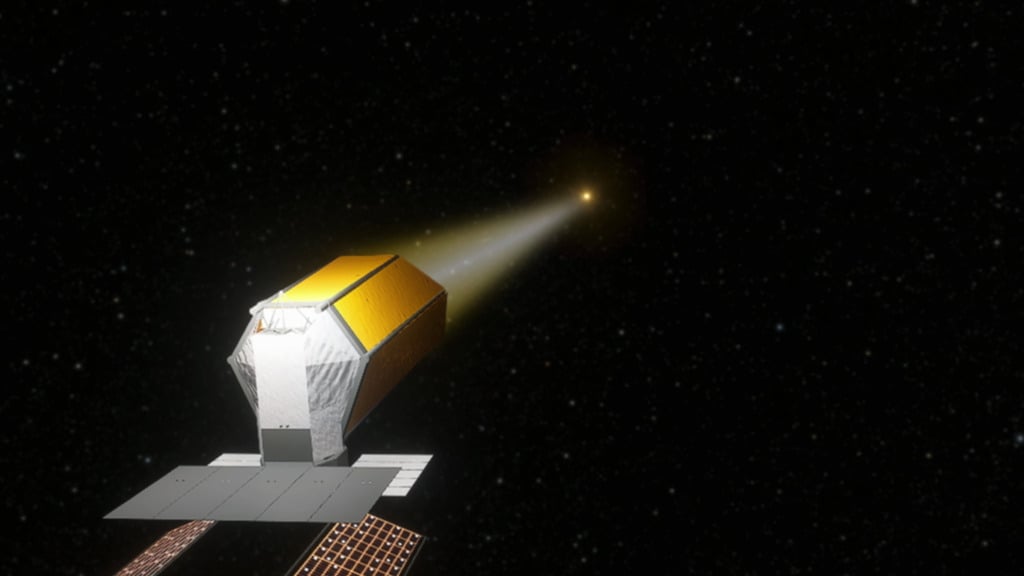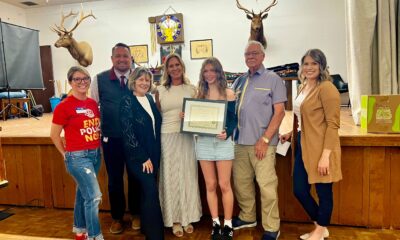Science
New Instrument Could Enhance HWO’s Search for Earth-Like Planets

The Habitable Worlds Observatory (HWO) is poised to revolutionize the search for Earth-like exoplanets, with a proposal to enhance its capabilities by adding a second instrument. This new addition aims to track planets with a precision of 0.5 micro-arcseconds (μas), significantly improving the observatory’s ability to detect rocky planets around nearby stars.
Currently, HWO’s primary tool, a coronagraph, focuses on identifying biosignatures in the atmospheres of at least 25 Earth-like exoplanets. Despite its potential, the coronagraph alone may not suffice for this ambitious goal. A recent study led by Fabien Malbet from the University of Grenoble Alpes suggests that incorporating an astrometric instrument could dramatically expand HWO’s reach.
The proposed astrometric instrument would enable HWO to identify Earth-sized planets orbiting hundreds of nearby stars. As of now, only 12% of sun-like stars within 65 light-years are known to host planets, and all identified so far are gas giants. The absence of rocky exoplanets in close proximity to our solar system does not imply they do not exist; rather, their signals may be obscured by noise from existing missions like Gaia. While Gaia is a leading planet-hunting mission, it operates at a precision of 20-30 μas, which falls short of detecting smaller planets.
By contrast, HWO could achieve a precision 400-600 times greater than Gaia with the proposed astrometric tool. This increased sensitivity would allow astronomers to observe the minute “wobble” of stars caused by orbiting planets, a technique that has been successful in exoplanet detection for decades. The finer the measurement, the smaller the mass of the planet that can be detected, making it feasible to identify Earth-like planets.
To reach this level of precision, the study emphasizes two crucial components: an advanced calibrator and a substantial number of images. The proposed technology, known as a Detector Calibration Unit (DCU), would create a series of light and dark bands across the CMOS sensor of the astrometer. This calibration process would help isolate and correct minor errors, ensuring the stability of multiple images taken over time.
Dr. Malbet and his team estimate that HWO would need to conduct over 100 individual measurements of a single target over its operational lifespan of 3-4 years to confirm the existence of a planet. This extensive data collection would minimize the impact of any residual errors, providing a clearer picture of potential candidates for atmospheric analysis.
In addition to enhancing the search for exoplanets, the new astrometric instrument could provide insights into the nature of Cold Dark Matter (CDM). Current theories suggest that dark matter may form “cusps” at the centers of galaxies, but existing data indicates a distribution resembling “cores.” The HWO’s astrometer could detect the subtle gravitational effects of dark matter clusters, potentially offering new understanding of its behavior and distribution.
The idea of incorporating an advanced astrometric capability is not new; Dr. Malbet was previously involved in the Theia mission proposal, which aimed to achieve similar objectives as a standalone project. Integrating this technology into HWO appears to be a logical step, given that it aligns with the observatory’s primary mission of discovering habitable worlds.
Development for HWO is not expected to commence until the 2030s, with potential launch timelines set for the 2040s. This timeline allows for the thoughtful consideration of enhancements to its design. As the project progresses, it remains to be seen whether managers will embrace these ambitious modifications to maximize the observatory’s potential in the quest for life beyond our solar system.
-

 Science2 weeks ago
Science2 weeks agoResearchers Challenge 200-Year-Old Physics Principle with Atomic Engines
-

 Politics2 weeks ago
Politics2 weeks agoNHP Foundation Secures Land for 158 Affordable Apartments in Denver
-

 World4 days ago
World4 days agoBoeing’s Aircraft Production: Assessing Numbers and Challenges
-

 Lifestyle2 weeks ago
Lifestyle2 weeks agoLongtime Friends Face Heartbreak After Loss and Isolation
-

 Entertainment4 days ago
Entertainment4 days agoSyracuse Stage Delivers Lively Adaptation of ‘The 39 Steps’
-

 Science4 days ago
Science4 days agoAI Misidentifies Doritos Bag as Gun, Triggers Police Response
-

 Lifestyle4 days ago
Lifestyle4 days agoRed Bluff High School’s Elli Nolan Named Rotary Student of the Month
-

 Health2 weeks ago
Health2 weeks agoNeuroscientist Advocates for Flag Football Until Age 14
-

 Lifestyle3 days ago
Lifestyle3 days agoTrump’s Push to Censor National Parks Faces Growing Backlash
-

 Business2 weeks ago
Business2 weeks agoSpirit Airlines Cuts Workforce with Furloughs for 365 Pilots
-

 World2 weeks ago
World2 weeks agoGlobal Military Spending: Air Forces Ranked by Budget and Capability
-

 Top Stories5 days ago
Top Stories5 days agoUrgent Search for Suspect Who Exposed Himself to Teen Girl









